当前位置:网站首页>The use of pytorch: temperature prediction using neural networks
The use of pytorch: temperature prediction using neural networks
2022-08-05 00:59:00 【The romance of cherry blossoms】
1.首先,Let's take a look at what's going on with the data
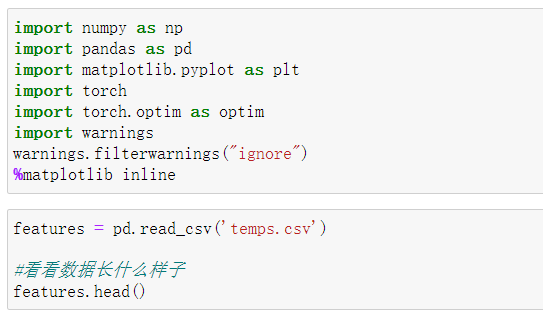
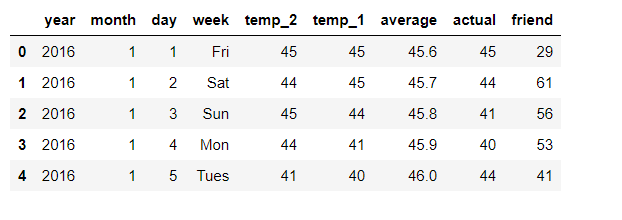
数据表中
- year,moth,day,week分别表示的具体的时间
- temp_2:前天的最高温度值
- temp_1:昨天的最高温度值
- average:在历史中,每年这一天的平均最高温度值
- actual:这就是我们的标签值了,当天的真实最高温度
- friend:这一列可能是凑热闹的,你的朋友猜测的可能值,whatever it is
Year, month and day are all characteristics of time,We convert it to time type data,To facilitate our drawing display
# 处理时间数据
import datetime
# 分别得到年,月,日
years = features['year']
months = features['month']
days = features['day']
# datetime格式
dates = [str(int(year)) + '-' + str(int(month)) + '-' + str(int(day)) for year, month, day in zip(years, months, days)]
dates = [datetime.datetime.strptime(date, '%Y-%m-%d') for date in dates]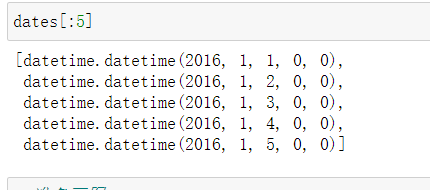
We then use the graph to visually display the data:
# 准备画图
# 指定默认风格
plt.style.use('fivethirtyeight')
# 设置布局
fig, ((ax1, ax2), (ax3, ax4)) = plt.subplots(nrows=2, ncols=2, figsize = (10,10))
fig.autofmt_xdate(rotation = 45)
# 标签值
ax1.plot(dates, features['actual'])
ax1.set_xlabel(''); ax1.set_ylabel('Temperature'); ax1.set_title('Max Temp')
# 昨天
ax2.plot(dates, features['temp_1'])
ax2.set_xlabel(''); ax2.set_ylabel('Temperature'); ax2.set_title('Previous Max Temp')
# 前天
ax3.plot(dates, features['temp_2'])
ax3.set_xlabel('Date'); ax3.set_ylabel('Temperature'); ax3.set_title('Two Days Prior Max Temp')
# 我的逗逼朋友
ax4.plot(dates, features['friend'])
ax4.set_xlabel('Date'); ax4.set_ylabel('Temperature'); ax4.set_title('Friend Estimate')
plt.tight_layout(pad=2) 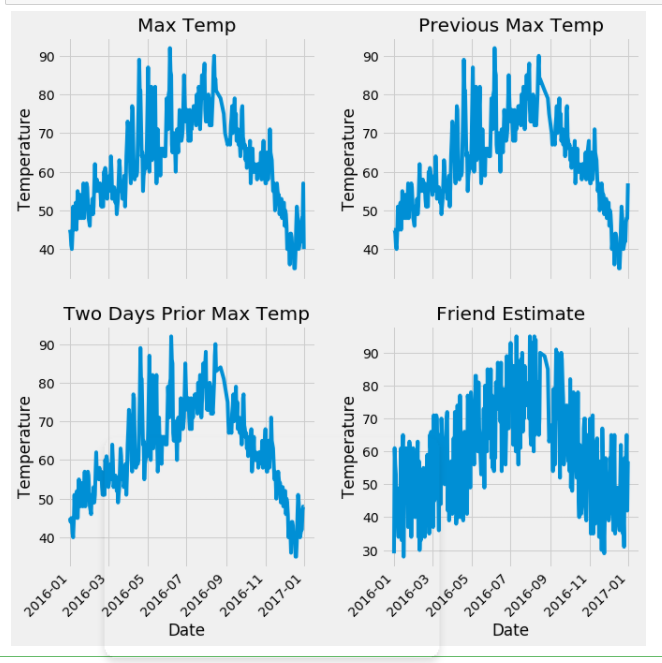
Convert text data to one-hot encoding:

Remove the label column from the feature:
# 标签
labels = np.array(features['actual'])
# 在特征中去掉标签
features= features.drop('actual', axis = 1)
# 名字单独保存一下,以备后患
feature_list = list(features.columns)
# 转换成合适的格式
features = np.array(features)对数据进行标准化处理:
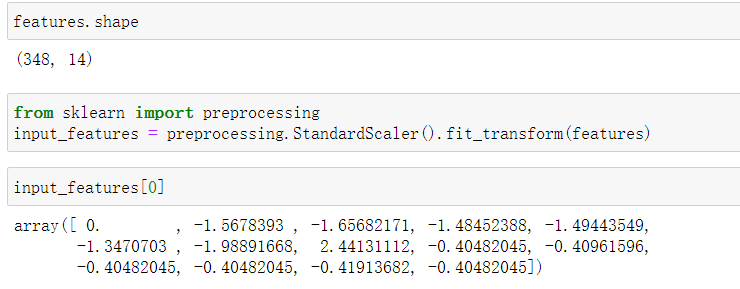
2.构建网络模型
包括:权重参数初始化、计算隐层、加入激活函数、预测结果、计算损失、返向传播计算、更新参数.另外,Remember to clear the gradient every iteration,否则梯度会累加
x = torch.tensor(input_features, dtype = float)
y = torch.tensor(labels, dtype = float)
# 权重参数初始化
weights = torch.randn((14, 128), dtype = float, requires_grad = True)
biases = torch.randn(128, dtype = float, requires_grad = True)
weights2 = torch.randn((128, 1), dtype = float, requires_grad = True)
biases2 = torch.randn(1, dtype = float, requires_grad = True)
learning_rate = 0.001
losses = []
for i in range(1000):
# 计算隐层
hidden = x.mm(weights) + biases
# 加入激活函数
hidden = torch.relu(hidden)
# 预测结果
predictions = hidden.mm(weights2) + biases2
# 通计算损失
loss = torch.mean((predictions - y) ** 2)
losses.append(loss.data.numpy())
# 打印损失值
if i % 100 == 0:
print('loss:', loss)
#返向传播计算
loss.backward()
#更新参数
weights.data.add_(- learning_rate * weights.grad.data)
biases.data.add_(- learning_rate * biases.grad.data)
weights2.data.add_(- learning_rate * weights2.grad.data)
biases2.data.add_(- learning_rate * biases2.grad.data)
# 每次迭代都得记得清空
weights.grad.data.zero_()
biases.grad.data.zero_()
weights2.grad.data.zero_()
biases2.grad.data.zero_()
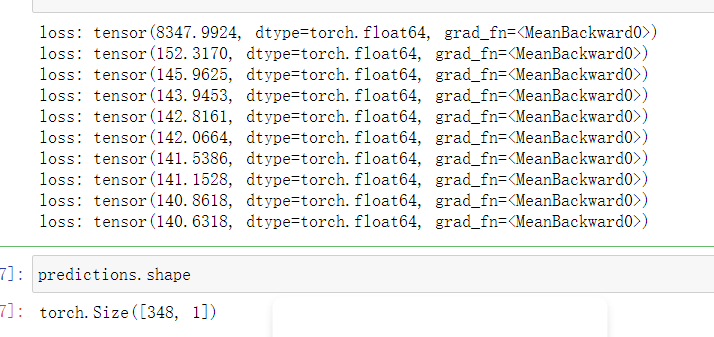
3.Simpler network model
直接使用nn.Model
input_size = input_features.shape[1]
hidden_size = 128
output_size = 1
batch_size = 16
my_nn = torch.nn.Sequential(
torch.nn.Linear(input_size, hidden_size),
torch.nn.Sigmoid(),
torch.nn.Linear(hidden_size, output_size),
)
cost = torch.nn.MSELoss(reduction='mean')
optimizer = torch.optim.Adam(my_nn.parameters(), lr = 0.001)训练网络:
# 训练网络
losses = []
for i in range(1000):
batch_loss = []
# MINI-Batch方法来进行训练
for start in range(0, len(input_features), batch_size):
end = start + batch_size if start + batch_size < len(input_features) else len(input_features)
xx = torch.tensor(input_features[start:end], dtype = torch.float, requires_grad = True)
yy = torch.tensor(labels[start:end], dtype = torch.float, requires_grad = True)
prediction = my_nn(xx)
loss = cost(prediction, yy)
optimizer.zero_grad()
loss.backward(retain_graph=True)
optimizer.step()
batch_loss.append(loss.data.numpy())
# 打印损失
if i % 100==0:
losses.append(np.mean(batch_loss))
print(i, np.mean(batch_loss))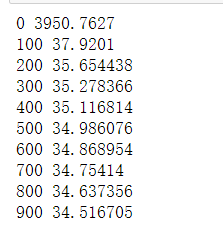
4.预训练结果
x = torch.tensor(input_features, dtype = torch.float)
predict = my_nn(x).data.numpy() 转换日期格式
dates = [str(int(year)) + '-' + str(int(month)) + '-' + str(int(day)) for year, month, day in zip(years, months, days)]
dates = [datetime.datetime.strptime(date, '%Y-%m-%d') for date in dates]
# 创建一个表格来存日期和其对应的标签数值
true_data = pd.DataFrame(data = {'date': dates, 'actual': labels})
# 同理,再创建一个来存日期和其对应的模型预测值
months = features[:, feature_list.index('month')]
days = features[:, feature_list.index('day')]
years = features[:, feature_list.index('year')]
test_dates = [str(int(year)) + '-' + str(int(month)) + '-' + str(int(day)) for year, month, day in zip(years, months, days)]
test_dates = [datetime.datetime.strptime(date, '%Y-%m-%d') for date in test_dates]
predictions_data = pd.DataFrame(data = {'date': test_dates, 'prediction': predict.reshape(-1)}) # 真实值
plt.plot(true_data['date'], true_data['actual'], 'b-', label = 'actual')
# 预测值
plt.plot(predictions_data['date'], predictions_data['prediction'], 'ro', label = 'prediction')
plt.xticks(rotation = '60');
plt.legend()
# 图名
plt.xlabel('Date'); plt.ylabel('Maximum Temperature (F)'); plt.title('Actual and Predicted Values');
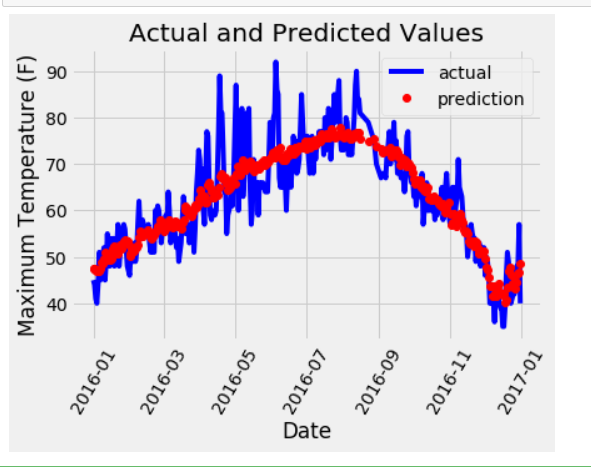
边栏推荐
猜你喜欢
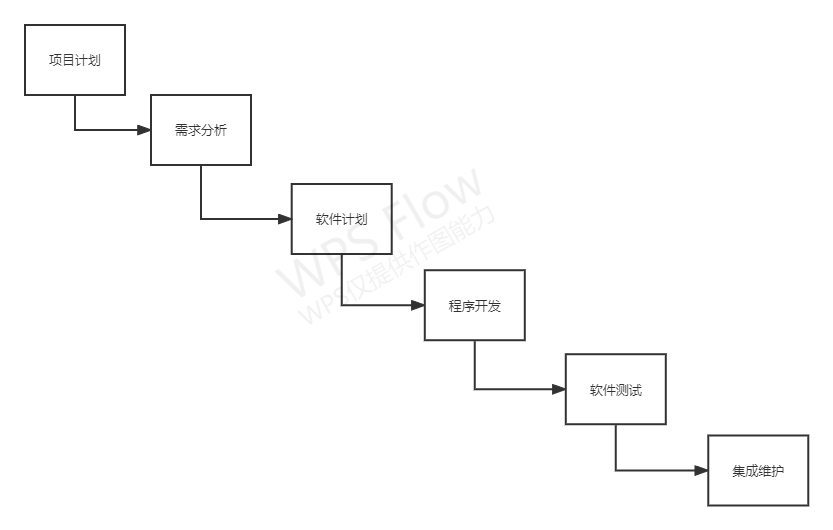
Theory of Software Fundamentals
![[GYCTF2020]EasyThinking](/img/40/973411c69d1e4766d22f6a4a7c7c01.png)
[GYCTF2020]EasyThinking
![[230] Execute command error after connecting to Redis MISCONF Redis is configured to save RDB snapshots](/img/fa/5bdc81b1ebfc22d31f42da34427f3e.png)
[230] Execute command error after connecting to Redis MISCONF Redis is configured to save RDB snapshots

【FreeRTOS】FreeRTOS与stm32内置堆栈的占用情况
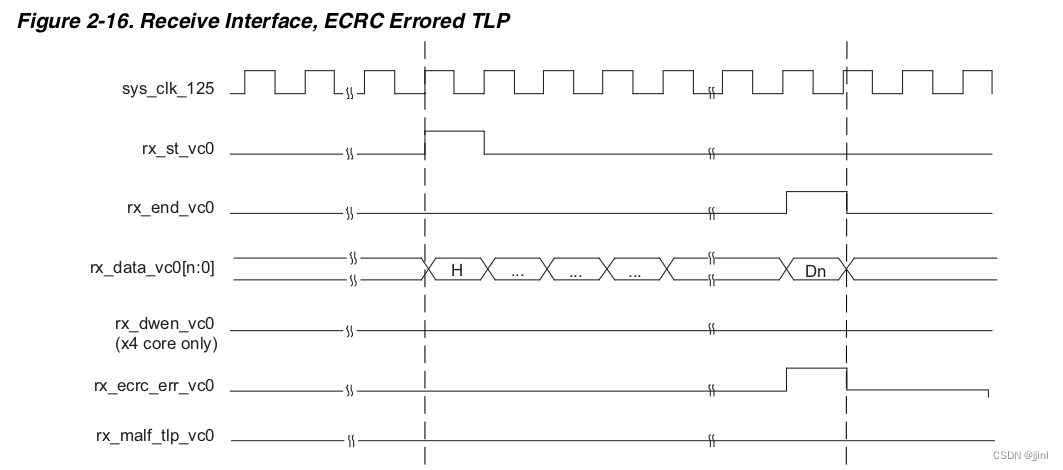
4. PCIe interface timing
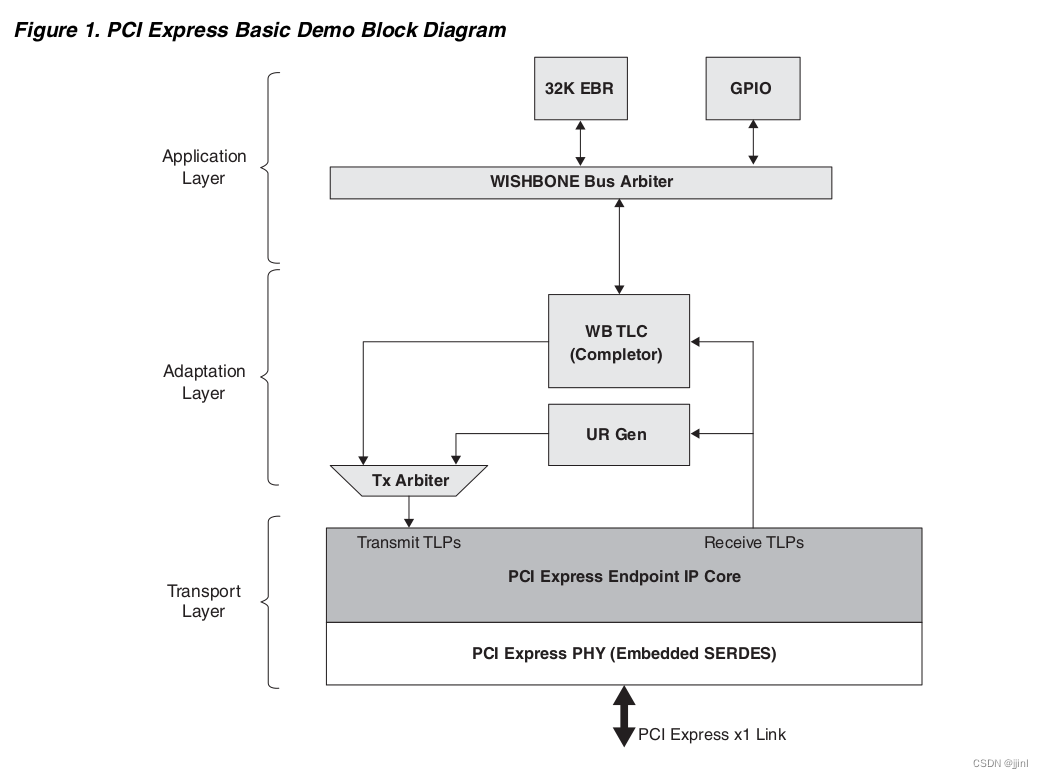
5. PCIe official example
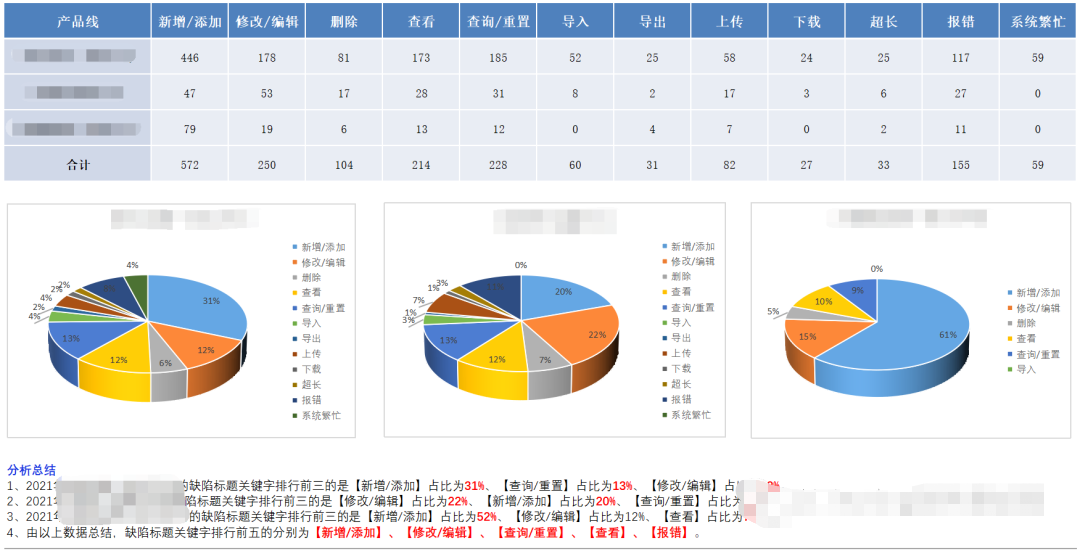
After the staged testing is complete, have you performed defect analysis?
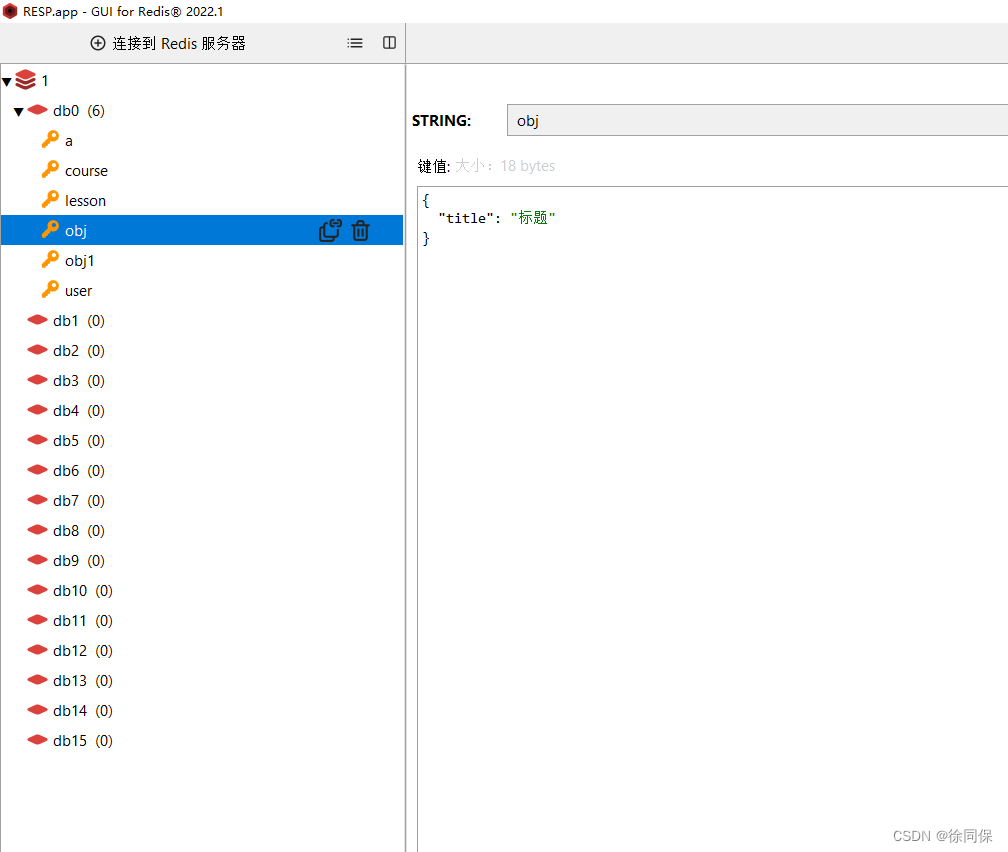
Redis visual management software Redis Desktop Manager2022

手把手基于YOLOv5定制实现FacePose之《YOLO结构解读、YOLO数据格式转换、YOLO过程修改》

蓝牙Mesh系统开发四 ble mesh网关节点管理
随机推荐
"WEB Security Penetration Testing" (28) Burp Collaborator-dnslog out-band technology
EL定时刷新页面中的皕杰报表实例
LiveVideoStackCon 2022 上海站明日开幕!
动态规划/背包问题总结/小结——01背包、完全背包
Zombie and orphan processes
torch.autograd.grad求二阶导数
FSAWS 的全球基础设施和网络
2022 Hangzhou Electric Power Multi-School Session 3 Question B Boss Rush
码率vs.分辨率,哪一个更重要?
Interview summary: Why do interviewers in large factories always ask about the underlying principles of Framework?
Software testing interview questions: What is the difference between load testing, capacity testing, and strength testing?
4. PCIe interface timing
Software test interview questions: BIOS, Fat, IDE, Sata, SCSI, Ntfs windows NT?
node uses redis
3. pcie.v file
Software Testing Interview Questions: What Are the Types of Software Testing?
Binary tree [full solution] (C language)
仅3w报价B站up主竟带来1200w播放!品牌高性价比B站投放标杆!
E - Many Operations (bitwise consideration + dp thought to record the result after the operation
ORA-00257